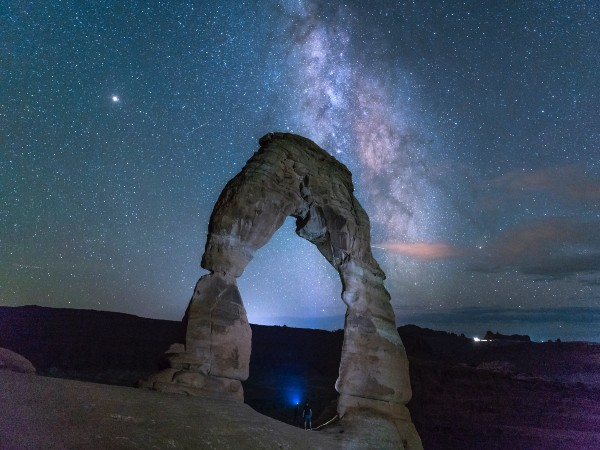Arches National Park
Despite looking like a barren wasteland, Arches National Park is a giant ecosystem filled with sage, juniper tress, cottonwoods, willows and various other plants. Animals dwell within the vegetation and the rockier areas such a bighorn sheep, deer, coyotes, bobcats, foxes, cottontail rabbits, snakes and other big and small creatures. It was primarily occupied by the Ute and Navajo people who would frequently trade with tribes surrounding or in the Grand Canyon.
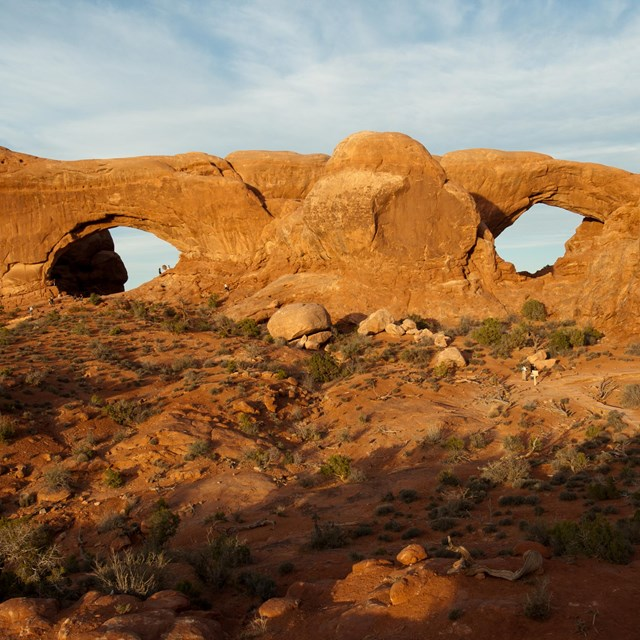
The time the Ute spent in the area of Arches was mainly temporary. They camped where ancient ancestral Puebloans had settled, leaving petroglyphs in the rock walls.
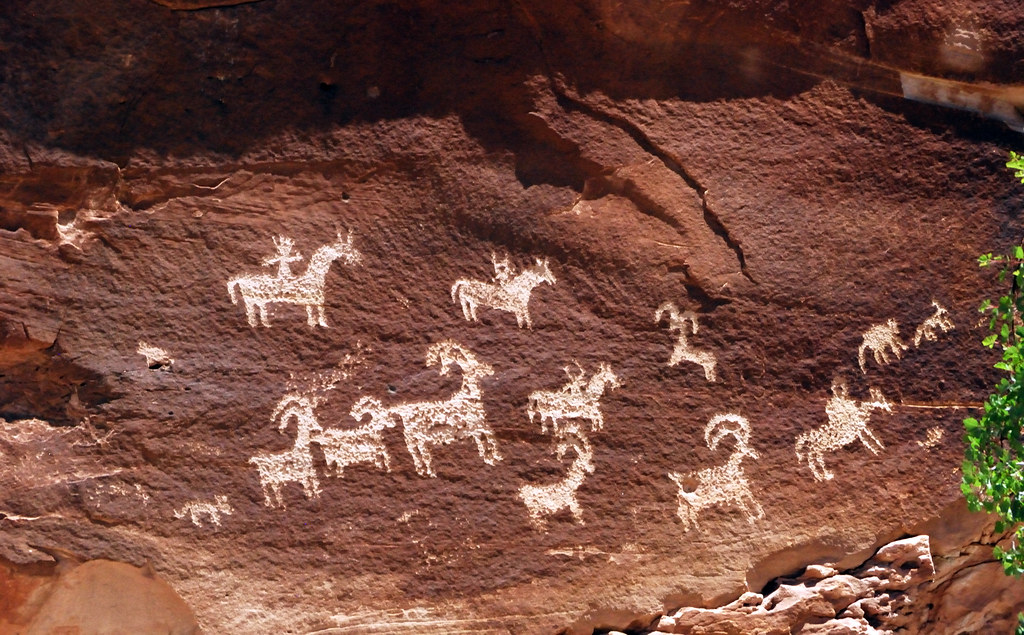 Ute petroglyphs of what appears to be Ute hunters chasing bighorn sheep on horseback
Ute petroglyphs of what appears to be Ute hunters chasing bighorn sheep on horseback
According to a list by The History Junkie there are 12 "sectors" of the Ute people
- Pahvant – Lived in modern-day Utah
- Moanunt – Lived in modern-day Utah
- Sanpits – Lived in modern-day Utah
- Timpanogots – Lived in modern-day Utah
- Uintah – Lived in modern-day Utah
- Seuvarits – Lived in modern-day Utah
- Yampa – Lived in modern-day Colorado
- Pananuche and Sabuagana – Lived in modern-day Colorado and Utah along the Colorado River
- Tabeguache – Lived in modern-day Colorado
- Weeminuche – Lived in modern-day Colorado and Utah
- Capote – Lived in modern-day Colorado
- Muache – Lived in modern-day Colorado
They were a tribe of what appeared as borrowed practices. They resembled the Shoshones, Paiutes and Plain indians, sometimes living in teepees while other lived in willow huts. They were seasonal-nomads who followed wild game and where the vegetation was the most prosperous. Men hunted animals such as buffalo, elk, rabbits, and beavers. They also highly depended upon fish from the Utah Lake. Women would gather roots, berries and seeds for both food and medicinal traditions. The Pahvant were the only known Ute band to cultivate food. With animals they would salvage every bit of it for clothes, food and tools.
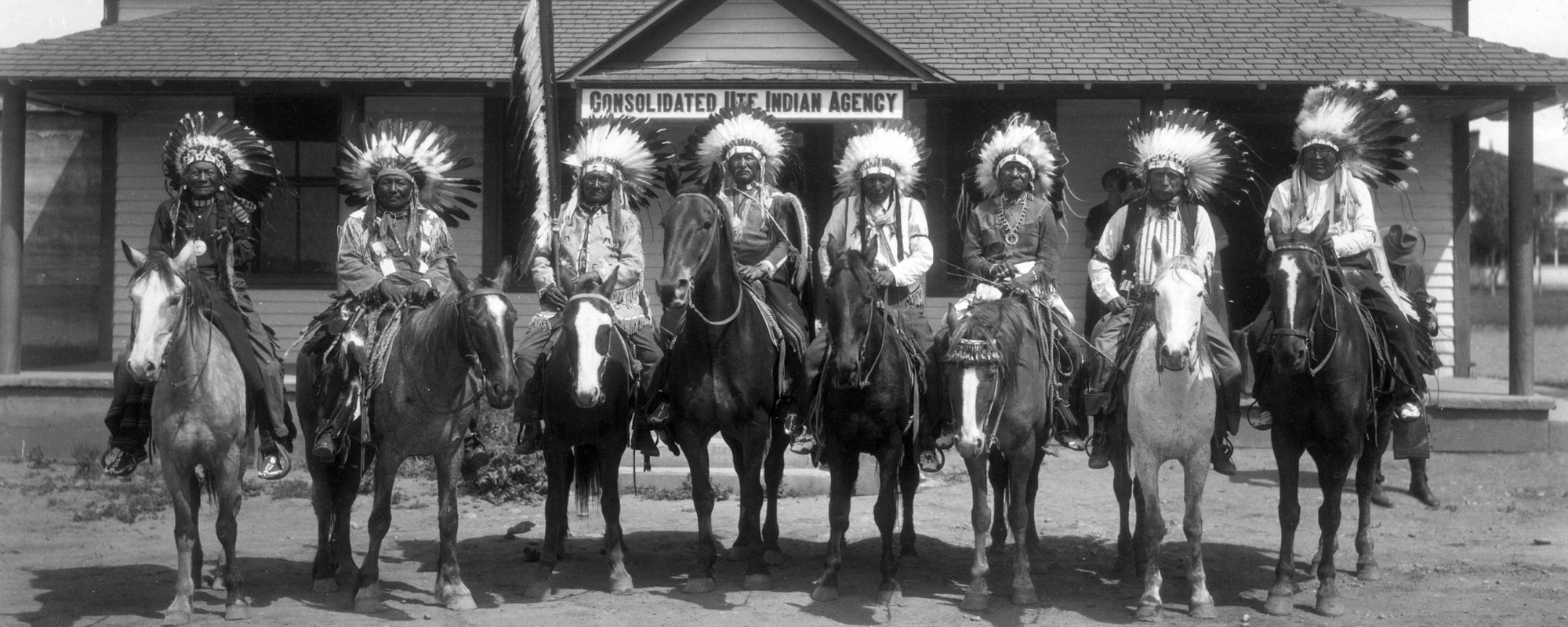
Consolidated Ute Indian Agency
After westward expansion, the Mormon European settlers were pushing to get the Ute people off "their" land. This attempt at a forced relocation caused the Walker War of 1853. Unfortunately, by the mid 1870's they were pushed onto a reservation. As the reservation was only 9% of their previous land, they tried to make do while hunting and foraging elsewhere.
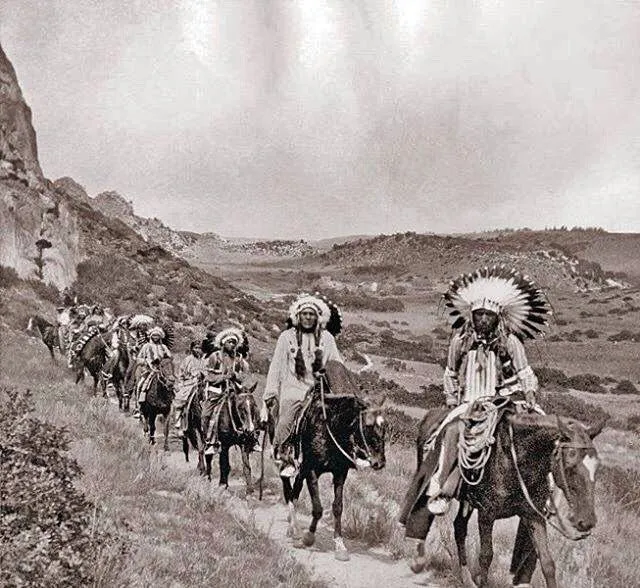
Many have questioned what the significance of the arches were in relation to native practices. An ethnographic study conducted by Dr. Richard Stoffle, a research anthropologist, asked the cultural significance of the arches to the surrounding tribes in the area, in which all agreed they were portals. The ritual purpose of the portals is left to speculation whether they were meant to lead to a higher being or something else, the magnificent structure of the arches as certainly stunned generations of civilizations.
